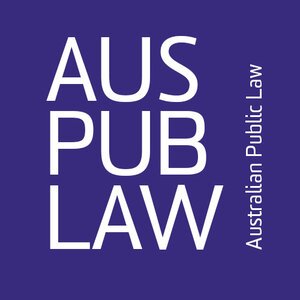
Index
- July 2025 2
- June 2025 1
- May 2025 2
- March 2025 2
- February 2025 2
- January 2025 1
- November 2024 5
- October 2024 2
- August 2024 3
- July 2024 2
- June 2024 4
- May 2024 1
- April 2024 5
- March 2024 5
- February 2024 4
- January 2024 2
- December 2023 5
- November 2023 7
- October 2023 4
- September 2023 5
- August 2023 3
- July 2023 5
- June 2023 3
- May 2023 5
- April 2023 3
- March 2023 5
- February 2023 9
- December 2022 9
- November 2022 3
- October 2022 7
- September 2022 4
- August 2022 8
- July 2022 3
- June 2022 4
- May 2022 9
- April 2022 7
- March 2022 2
- February 2022 5
- December 2021 7
- November 2021 12
- October 2021 9
- September 2021 14
- August 2021 9
- July 2021 5
- June 2021 9
- May 2021 4
- April 2021 3
- March 2021 13
- February 2021 7
- December 2020 1
- November 2020 4
- October 2020 4
- September 2020 5
- August 2020 5
- July 2020 8
- June 2020 5
- May 2020 11
- April 2020 6
- March 2020 5
- February 2020 3
- January 2020 1
- December 2019 1
- November 2019 3
- October 2019 2
- September 2019 2
- August 2019 4
- July 2019 2
- June 2019 2
- May 2019 5
- April 2019 8
- March 2019 2
- February 2019 3
- December 2018 1
- November 2018 9
- October 2018 2
- September 2018 5
- August 2018 3
- July 2018 3
- June 2018 2
- May 2018 5
- April 2018 7
- March 2018 3
- February 2018 4
- December 2017 3
- November 2017 7
- October 2017 4
- September 2017 3
- August 2017 3
- July 2017 1
- June 2017 3
- May 2017 2
- April 2017 3
- March 2017 4
- February 2017 3
- January 2017 1
- December 2016 3
- November 2016 4
- October 2016 2
- September 2016 1
- August 2016 3
- July 2016 1
- June 2016 3
- May 2016 3
- April 2016 4
- March 2016 4
- February 2016 3
- January 2016 1
- December 2015 2
- November 2015 4
- October 2015 4
- September 2015 4
- August 2015 3
- July 2015 6
- June 2015 6
Could For Women Scotland Impact How Australian Courts Understand What ‘Women’ Means?
Nina Dillon Britton
On 16 April 2025, in a unanimous decision, the UK Supreme Court found that, for the purposes of the Equality Act 2010 (UK), ‘sex’ means one’s biological sex at birth and ‘women’ means only people who were female sex at birth: For Women Scotland Ltd v The Scottish Ministers [2025] UKSC 16. The Court rejected the Scottish Ministers’ contention that transgender women with gender recognition certificates were ‘women’ for the purposes of the Equality Act (as well as the corollary, that ‘men’ included transgender men with such certificates). The effects of the Supreme Court’s decision will be deeply felt by transgender people in the UK, and the judgment will no doubt be subject to significant critical analysis.
This blog post concerns the question of whether the ruling in For Women Scotland has relevance in Australia, and particularly whether it might influence Australian courts in interpreting the Sex Discrimination Act 1984 (Cth)—the rough federal equivalent to the Equality Act. The issue is a live one. Last year, the construction of the words ‘woman’ and ‘sex’ were considered in the context of a gender identity discrimination claim brought by a transgender woman against an app marketed as ‘female-only’: Tickle v Giggle for Girls Pty Ltd (No 2) [2024] FCA 960 (Tickle v Giggle (No 2)). The Federal Court’s conclusion that ‘sex’ (in its ordinary meaning) was changeable, and thus that the complainant’s discrimination claim was successful, is currently under appeal. Similar questions of construction have also been raised in a decision by the Administrative Review Tribunal to uphold a decision by the Australian Human Rights Commission not to grant an exemption to a lesbian group, which sought to hold events that would exclude transgender women: Lesbian Action Group and Australian Human Rights Commission [2025] ARTA 34. That decision is currently the subject of a judicial review application in the Federal Court.
“I’m sorry, I can’t hear you … my jurisdiction keeps dropping out” Citta Hobart Pty Ltd v Cawthorn [2022] HCA 16
Stephen McDonald SC
Each of the paragraphs of s 75 and s 76 of the Commonwealth Constitution identifies a class of matters with a federal aspect. The scheme of the Constitution is that matters of those kinds can only be determined in the exercise of judicial power by ‘courts’. Section 77 of the Constitution enables the Commonwealth Parliament to determine the extent to which judicial power in such matters is exercised by the High Court, other federal courts, and state courts.
State Parliaments may create tribunals which are not ‘courts’, and may confer upon such tribunals aspects of both the administrative power and the judicial power of the state. However, the power of state Parliaments with respect to state non-court tribunals does not extend to investing them with judicial power to decide matters of the kinds identified in ss 75 and 76 of the Constitution. A general grant of jurisdiction to a non-court tribunal under state law will thus be construed as excluding jurisdiction over matters of those kinds.
These principles were established by the High Court’s decision in Burns v Corbett [2018] HCA 15; 265 CLR 304. Burns v Corbett had involved a claim in a state non-court tribunal between residents of different states – the subject matter identified in s 75(iv). The recent decision of Citta Hobart Pty Ltd v Cawthorn [2022] HCA 16 concerned the application of these principles in a different context: it concerned a claim that was said to give rise to the kind of federal matters identified in sub-ss 76(i) and 76(ii) of the Constitution. This post will discuss the decision in Citta Hobart, before turning to the practical problems posed by the substantial limits – confirmed by these two cases – on state legislative power in respect of the jurisdiction of state non-court tribunals.


![“I’m sorry, I can’t hear you … my jurisdiction keeps dropping out” Citta Hobart Pty Ltd v Cawthorn [2022] HCA 16](https://images.squarespace-cdn.com/content/v1/6153fe0470ebd0659ee01575/1653004838318-6MCICDZNKXSRTU50TPHN/Stephen%2BMcDonald%2B2022.jpg)